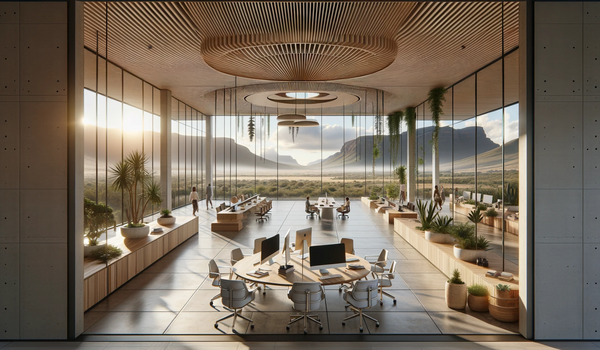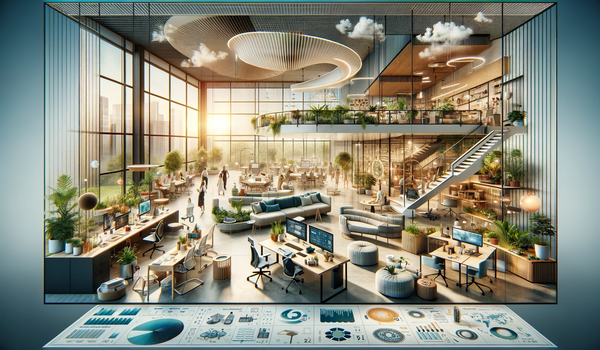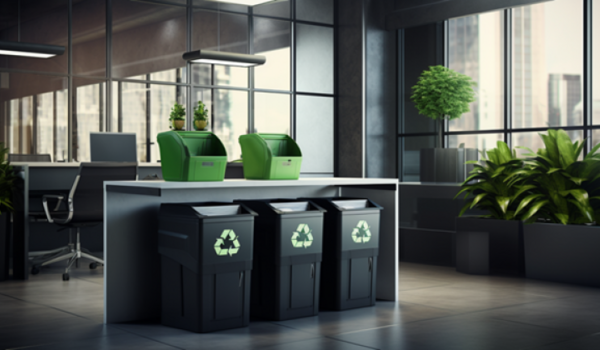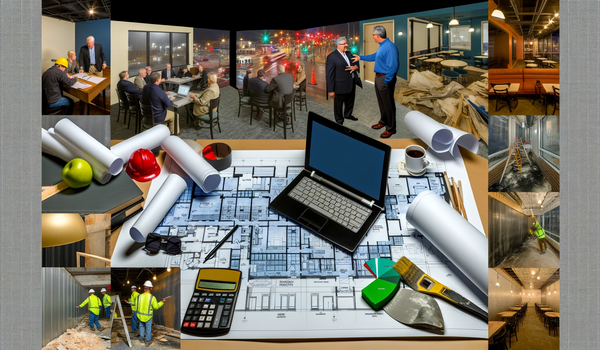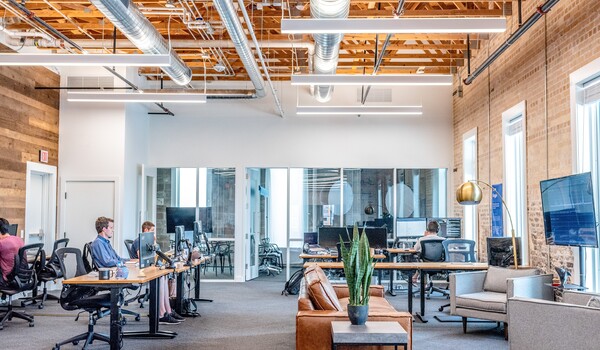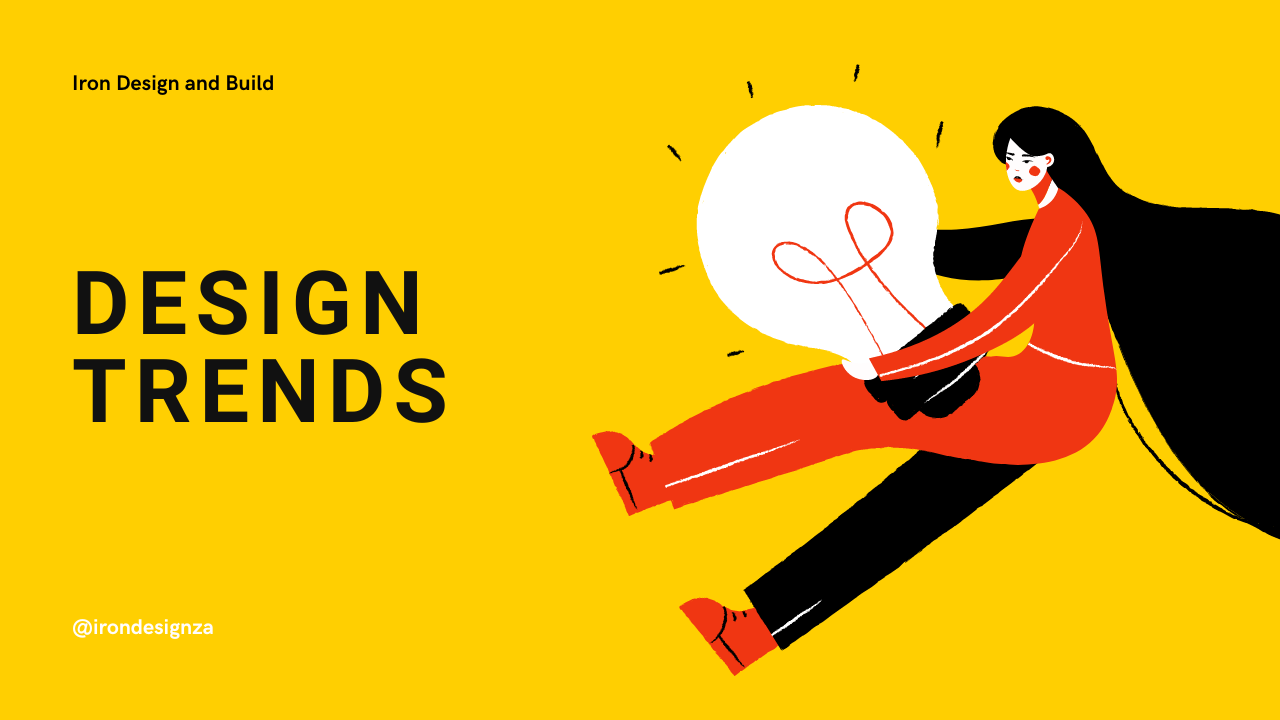
Title: Top Trends Shaping Today's Commercial Design Landscape
Revolutionizing Work and Retail Spaces: Navigating the Future of Commercial Design
November 2023
Title: Top Trends Shaping Today's Commercial Design Landscape
Introduction
In the ever-evolving realm of commercial design, staying abreast of the latest trends is not just a matter of aesthetic preference but a strategic business necessity. The spaces we work in, shop in, and interact with daily are not just physical locations; they are experiential hubs that reflect a company's ethos, values, and vision. From sustainable materials to smart technology integration, the current trends in commercial design are a testament to the changing expectations and values of both businesses and consumers. In this in-depth exploration, we delve into the key trends redefining commercial design today, offering insights and inspiration for companies looking to revamp their spaces in line with contemporary standards.
1. Sustainable and Eco-Friendly Design
At the forefront of today's commercial design trends is the undeniable emphasis on sustainability and eco-friendliness. Gone are the days when green design was a mere afterthought. In our climate-conscious world, it has become a central focus for businesses keen on reducing their environmental impact while appealing to a more eco-aware customer base.
The Rise of Eco-Friendly Materials
The choice of materials in commercial spaces has seen a significant shift towards sustainable options. Recycled materials, responsibly sourced woods, and non-toxic paints are no longer rarities but expectations in modern design. For instance, bamboo, known for its rapid growth and sustainability, is becoming famous for flooring and furniture.
Energy Efficiency and Sustainable Practices
Beyond materials, energy efficiency plays a pivotal role in the eco-friendly narrative. Integrating LED lighting, energy-efficient appliances, and intelligent climate control systems reduces the commercial space's carbon footprint and cuts operational costs. Furthermore, rainwater harvesting and solar panels are becoming increasingly common in forward-thinking designs.
2. Technology Integration in Design
In the digital age, technology has become a cornerstone of commercial design, reshaping spaces to be more interactive, efficient, and aligned with the needs of the modern consumer and workforce. Integrating technology in commercial design isn't just about aesthetic appeal; it's about creating adaptable, intuitive, and future-proof environments.
The Era of Smart Commercial Spaces
Innovative technology, encompassing the Internet of Things (IoT), is revolutionising the operations of commercial spaces. Technology is making spaces more comfortable and sustainable, from automated lighting systems that adjust based on natural light availability to advanced climate control that optimises energy use. Additionally, interactive displays and seamless Wi-Fi connectivity enhance customer engagement and experience.
Enhancing Experience with Technology
The purpose of technology in commercial design extends beyond functionality; it's about creating an experience. For instance, retail spaces employ augmented reality (AR) to provide customers with immersive product demonstrations. Offices use intelligent boards and collaborative software to facilitate seamless remote working and in-office collaboration.
Real-World Examples of Tech-Forward Commercial Design
To illustrate the impact of technology integration, consider [examples of businesses that have successfully implemented these technologies, explaining how they have improved their operations, customer engagement, or employee productivity].
3. Biophilic Design Elements
Biophilic design is a concept that seeks to connect occupants more closely to nature. This trend is gaining traction in commercial spaces due to its numerous benefits, from enhanced well-being to increased productivity.
The Science Behind Biophilic Design
Biophilia, the inherent human inclination to affiliate with nature, is at the heart of this design philosophy. Incorporating natural elements like plants and water features and maximising natural light can significantly reduce stress and improve overall mood and creativity among employees.
Incorporating Nature into the Workspace
Practical implementations of biophilic design include living green walls, indoor gardens, and natural materials like wood and stone. Even the use of nature-inspired colours and patterns can have a biophilic effect.
Impact on Well-being and Productivity
Studies have shown that biophilic design can lead to a marked improvement in employee well-being and productivity. Spaces that feature natural elements tend to foster a more positive work environment and enhance a company's image as an employer.
4. Flexible and Adaptive Spaces
The demand for flexible and adaptive spaces has surged, particularly after the global pandemic. The traditional concept of fixed layouts and rigid structures is giving way to more dynamic, multi-purpose environments.
The Shift Towards Multi-Purpose Design
Flexible design involves creating spaces that can easily be reconfigured for different purposes. This could mean modular furniture, movable partitions, and spaces that can seamlessly transition from a conference room during the day to a social area in the evening.
Modular Furniture and Convertible Spaces
Innovations in furniture design are central to this trend. Convertible desks, foldable workstations, and mobile partitions are just a few examples of how furniture is designed to support a more dynamic use of space.
Adapting to Changing Business Needs
This trend is not just about space utilisation; it's about future-proofing businesses. As companies evolve and grow, their space needs can change rapidly. Flexible design allows for this evolution without the need for extensive renovations.
5. Emphasis on Local Culture and Art
Incorporating local culture and art into commercial spaces has emerged as a significant trend, reflecting a growing desire to create unique, meaningful environments. This trend goes beyond aesthetics; it's about connecting with the local community and celebrating regional identity.
Celebrating Local Identity Through Design
Integrating local art and cultural motifs can transform a commercial space into a reflection of its surroundings. This approach enhances the aesthetic appeal and helps businesses establish a stronger connection with their local community. It can be seen in local artwork, architectural styles reflecting regional traditions, or interiors incorporating local crafts.
Benefits of Branding and Community Engagement
Incorporating local culture into commercial design can significantly bolster a brand's identity and resonate more deeply with customers. It creates a sense of authenticity and can differentiate a business in a crowded marketplace. Moreover, it can foster a sense of pride among employees and strengthen community ties.
6. Bold Colours and Unique Textures
Moving away from the minimalist palettes that have dominated for years, commercial spaces now embrace bold colours and unique textures. This trend is about making a statement and energising spaces in new and exciting ways.
The Power of Colour in Commercial Design
Colour has a profound impact on the atmosphere of a space and the mood of its occupants. Vibrant hues can invigorate and inspire, while rich, deep tones can create an atmosphere of sophistication and luxury. The trend towards bold colours is about breaking free from the conventional and embracing a more dynamic and expressive approach to design.
Textures that Transform Spaces
Texture plays a crucial role in adding depth and interest to commercial spaces. The interplay of different materials, from smooth and sleek to rough and rustic, can create a sensory experience that elevates the design. Textured finishes, tactile surfaces, and innovative fabrics add character and personality to spaces.
Visual Examples of Trendsetting Designs
To showcase this trend, [insert examples or a gallery of commercial spaces that effectively use bold colours and unique textures to create impactful designs]. These examples illustrate how the thoughtful use of colour and texture can completely transform a commercial space.
Conclusion
The landscape of commercial design is continuously evolving, driven by changes in technology, cultural shifts, and a deeper understanding of the impact of our surroundings on our well-being and productivity. The trends discussed in this blog - from sustainable and eco-friendly design to the integration of local culture and art - represent more than just aesthetic choices. They reflect a broader movement towards creating spaces that are functional, efficient, meaningful, engaging, and in tune with the values and needs of today's society.
For businesses looking to stay ahead, embracing these trends is not just an opportunity to revitalise their physical spaces. It's a chance to redefine their brand, foster a deeper connection with their customers and employees, and position themselves as forward-thinking leaders.
Whether you're planning a redesign of your commercial space or just starting, consider how these trends can be woven into your design strategy to create a space that is not only visually stunning but also resonant with the values and aspirations of your audience.
We invite you to share your thoughts on these trends or to contact us for a consultation to bring these innovative design ideas to your commercial space.
Share insight:
